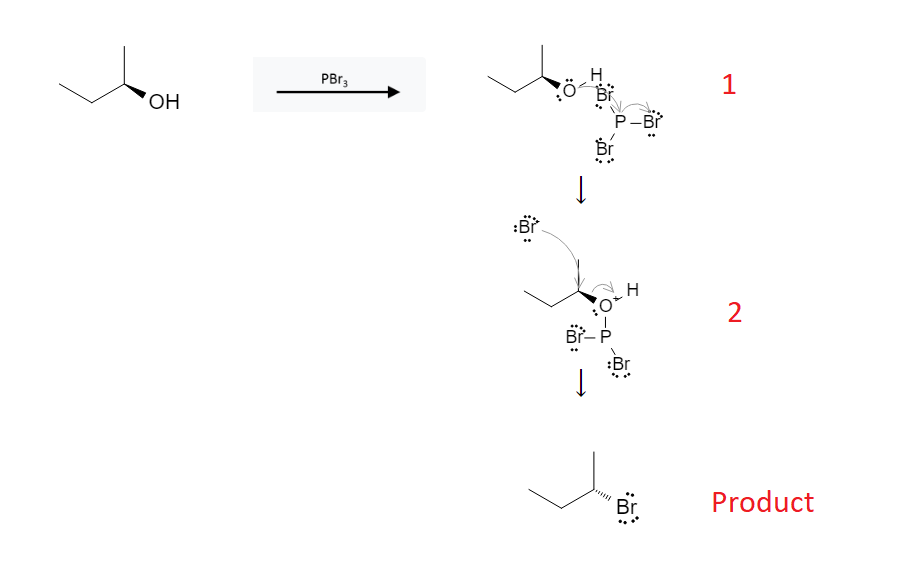Alcohol Reactions: Alcohol Bromination Using PBr3
Phosphorus Tribromide (PBr3) in the presence of alcohols reacts to form alkyl bromides:

This reaction only occurs with primary and secondary alcohols (tertiary alcohols will not react). Additionally, if the alcohol molecule begins with a chiral center on the carbon the alcohol group is attached to, the reaction will invert the stereochemistry (SN2 reaction):
Primary Alcohols

Secondary Alcohols

NOT Tertiary Alcohols

Stereochemistry Inversion

The reaction mechanism is depicted below:

In the first step, lone pair electrons from the alcohol group attack phosphorus, causing the phosphorus-bromine bond to break and give the electrons to the bromine, forming a bromide ion.
In the second step, the free, negatively charged bromide ion, attacks the backside of the intermediate structure, causing the alcohol group to leave and the bromine group to take its place in an SN2 reaction. This is also the step where stereochemistry inversion would occur as the bromide ion performs a “backside attack”.
The reagent used for this reaction is PBr3.
Practice this reaction using our Reaction Solver!